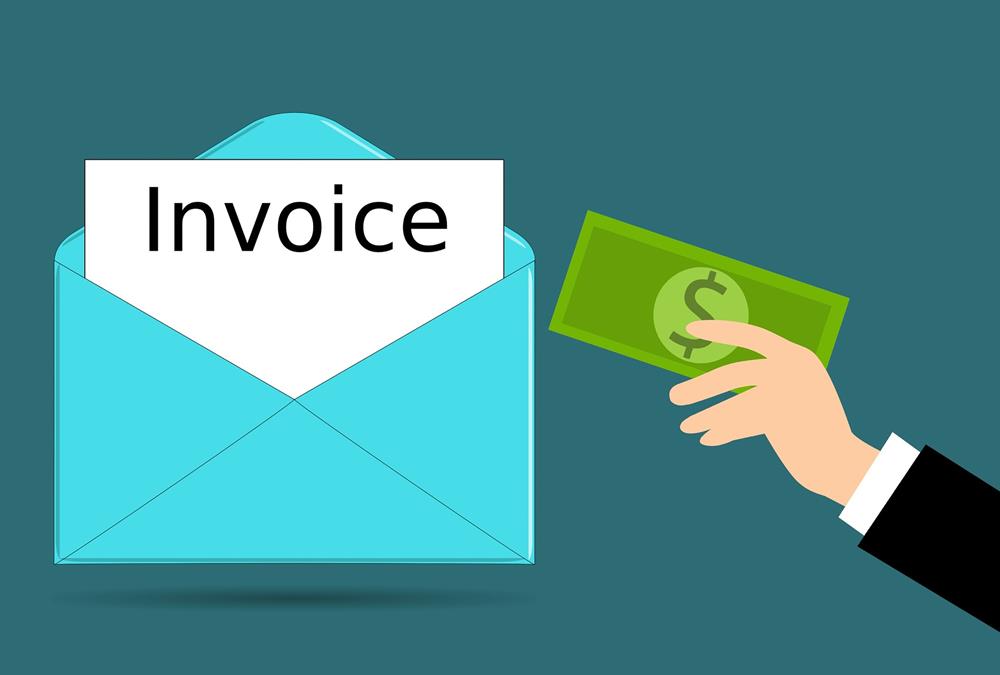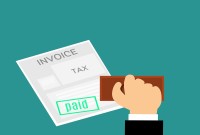- Home
- Business Processes
- Industry Knowledge
- Aerospace Industry
- Automotive Industry
- Banking Domain
- BFSI Industry
- Consumer/ FMCG Industry
- Chemicals Industry
- Engineering & Construction
- Energy Industry
- Education Domain
- Finance Domain
- Hospitality Domain
- Healthcare Industry
- Insurance Domain
- Retail Industry
- Travel and Tourism Domain
- Telecom Industry
- Leadership Skills
- eLearning
- Home
- Functional
- Order to Cash
- What is Invoice to Cash Process
What is Invoice to Cash Process
In this article, we will explore the business process area known as; Invoice to Cash; Also known as I2C. Learning objectives for this lesson are: Meaning of Invoice to Cash Process; Sub Processes under Invoice to Cash; Process Flow for Invoice to Cash; Key Transactions Fields; Key Setups/Master Data Requirements.
Meaning of Invoice to Cash
- The Customer Invoice to Cash process involves the process; from the moment the invoice is created; until the moment the customer's debt (payment) is settled or reconciled.
- The Invoice to Cash business process starts with the invoice and includes all actions that the user or system performs; to process payments, apply payments, give credits and ultimately to, collect cash from your customer.
- Payment Operations also has deep ties to Accounting, and one of the objectives of this process is to ensure correct account receivables accounting.
- Every system has different transactions and business operations, for the Invoice to Cash Business Process, as businesses may follow different revenue recognition rules.
Sub Processes under Invoice to Cash Functional area
The process for I to C can be summarized in following steps:
1.Creating a Sales Invoice
- This could be manual entry in the system
- Can be auto created using information from a Sales Order
- Can be created based on Shipment Details
- Or you can use information available on existing invoice to Copy the same Issuing the invoice
2.Monitoring Payments
3.Receive Payments
4.Manage Discounts, Adjustments, Bad Debts and Disputes
5.Accounting for Receivables to make sure accounting records are correctly updated with the transactions
Process Flow for Invoice to Cash Process
Invoice to Cash process can be divided into four sub processes;
Step One; Customer Billing or Invoicing
Bills can be raised to customer in many different ways;
- This could be manual entry in the system
- Can be auto created using information from a Sales Order
- Can be created based on Shipment Details
- Or you can use information available on existing invoice to Copy the same Issuing the invoice
- You can use any other method based on your specific business needs
Step Two; Making Adjustments on Invoices or Outstanding Dues from Customers
There could be various types of adjustments that might be required once the invoice has been raised on the customer. Some examples are;
- Adjustments; You might need to make adjustments for various reasons like goods returned, shipping delays, tax differences etc..
- Disputes; The invoices raised can be disputed by the customer, which needs to be tracked and appropriately closed.
- Discounts; Discounts need to be provided to customer based on agreed payment terms or other conditions.
- Bad Debts; The invoice could turn as a bad debt and you might need to write it off; or make provision in your books.
Step Three; Receiving and Managing Payments from Customers
There could be various ways in which payments can be made by the customer. Some examples are;
- Cash;
- Cheque;
- Bank Transfer;
- Adjustment from the Accounts Payable balance due to the customer as a supplier;
- Other agreed methods;
Step four; Application and Accounting of the Cash Received
Once the payment has been received it needs to be knocked off against the dues from the customer. There are various ways in which payments can be applied like;
- To the respective invoice against which the payment has been received. In this case; the outstanding against the particular invoice; becomes zero; and the invoice is closed.
- To the respective account; This happens when the payment cannot be identified against a particular invoice, but the customer is known. In this case; the total “Accounts Receivable” from that customer gets reduced by the receipt amount; but the respective invoices still remain open.
- Remains Unapplied; The cash or payment has been received; but the customer cannot be identified; in this case the cash is acknowledged and payment is classified as unapplied.
- This completes the invoice to cash basic cycle. Other steps like customer relationship management; bank reconciliation etc. can also be integrated with this cycle.
Key Transaction Fields
Let us understand some key generic fields that are used in almost every system or ERP during the invoice to cash process;
- Invoice Date; Date that will be used as the Invoice Date for the generated documents
- Accounting Date; The date that defines to which accounting period this transaction will be posted to
- Invoiced Quantity; Quantity of the product to be invoiced.
- Net Unit Price; Price applied to the product
- Line Net Amount; Invoiced Quantity multiplied by Net Unit Price. Price of the line before taxes.
- Sales Order; Sales order to generate an invoice for
- Business Partner; Specific customer to be invoiced
- Due Date; The deadline by which this payment is supposed to be paid. This date is calculated depending on the Invoice date and the Payment terms
- Payment Method; The form of payment of the invoice
- Expected Amount; Full amount To be paid in the due date.
- Received; Amount already paid.
- Outstanding; Amount that remains unpaid.
- Last Payment Date; Date of the last payment received against this payment plan.
- Number of payments; Number of payment events against this payment plan.
- Total Paid; Amount that has been paid against the invoice.
- Days till Due; Number of days for the debt to due.
- Order Reference; An internal reference number used by the Business Partner can be entered in this field.
- Payment No; The reference to the Payment Document (e.g., the cheque number)
- Description; The text added to the payment transaction upon entry.
- Paid Amount; The amount of the payment made.
- Received Amount; The amount of the payment received.
- Cleared; Whether the transaction has been matched to a transaction on the Bank Statement.
Key Setups / Perquisites
Some key master elements or setups that are perquisite; to this process before transactions can take place in any ERP or any other system:
- Organization; Organization to create invoices for.
- Business Partner; The customer to be invoiced
- Payment Method; Payment method that the customer will use to pay invoices
- Payment Terms; The payment term that defines the due date of the invoice
- Product; The product to be invoiced
- Tax; Tax to be applied to the product's amount (should be automatically pulled from product definition)
Related Links
You May Also Like
-
The Outbound process starts with routing the shipments. The Outbound execution process starts from the point when pick tasks are completed for an outbound shipment and ends at the point where the outbound packages are loaded into trailers. The Warehouse Outbound process includes managing and controlling outgoing materials starting from the download of orders through to the shipping of products from the warehouse.
-
When a customer wants a product that has been stored in the warehouse, the same need to be picked off the shelf (or off the floor) and get it ready for shipping. Depending on how big is the warehouse, picking can take a while. (Many distribution centers cover more than 1 million square feet.). Hence, warehouse order picking methods are an important aspect within any warehouse.
-
What is Invoice to Cash Process
In this article, we will explore the business process area known as; Invoice to Cash; Also known as I2C. Learning objectives for this lesson are: Meaning of Invoice to Cash Process; Sub Processes under Invoice to Cash; Process Flow for Invoice to Cash; Key Transactions Fields; Key Setups/Master Data Requirements.
-
Learning objectives for this lesson are: Meaning of Order to Cash Process; Sub Processes under Order to Cash; Process Flow for Order to Cash; Key Roles & Transactions; Key Setups/Master Data Requirements.
-
One of the warehousing best practices that retailers like Walmart, Amazon, and Target have adopted is known as cross-docking. During this process the inbound products are unloaded at a distribution center and then sorted by destination, and eventually reloaded onto outbound trucks. In real parlance, the goods are not at all warehoused but just moved across the dock (hence the name).
-
Warehouses can be places where piles of packed or loose products occupy space. If left disorganized, it will become very challenging to identify products for packing or picking. Hence, proper organization of warehouse is very important. Warehouse labeling systems eliminate this problem by making sure products are easily identified and managed during the warehousing and shipping process. Labeling is the most functional and cost-effective way to keep your warehouse organized and operating efficiently.
-
This article discusses the key documents generated during the order to cash process. Learn the documents that are created while processing AR transactions and business significance of each of these documents. This article is applicable to all ERP's and systems.
-
When products arrive at a facility, there need to be a defined process to let them in. The process for accepting inventory when it arrives is called "Receiving". Any warehousing operation must be able to receive inventory or freight from trucks at loading docks and then stow them away in a storage location. Receiving often involves scheduling appointments for deliveries to occur, along with unloading the goods and performing a quality inspection.
-
What is a Warehouse & why companies need them?
All organizations hold stocks. In virtually every supply chain, gaps exist between when something is produced and when a customer is ready to buy or receive it. Stocks occur at any point in the supply chain where the flow of materials is interrupted. This implies that products need to be stored during this period of gap.
-
Types of Inventory Count Processes
While dealing with lots of inventory in a warehouse, lots of things can go wrong. Shipments may not have the right number of units in them, or they could get damaged somewhere along the supply chain. Discrepancies in the stock may arise as part of every inventory control, and need to be corrected immediately after the inventory control procedure has been finished.
Explore Our Free Training Articles or
Sign Up to Start With Our eLearning Courses

About Us
Learning
© 2023 TechnoFunc, All Rights Reserved









